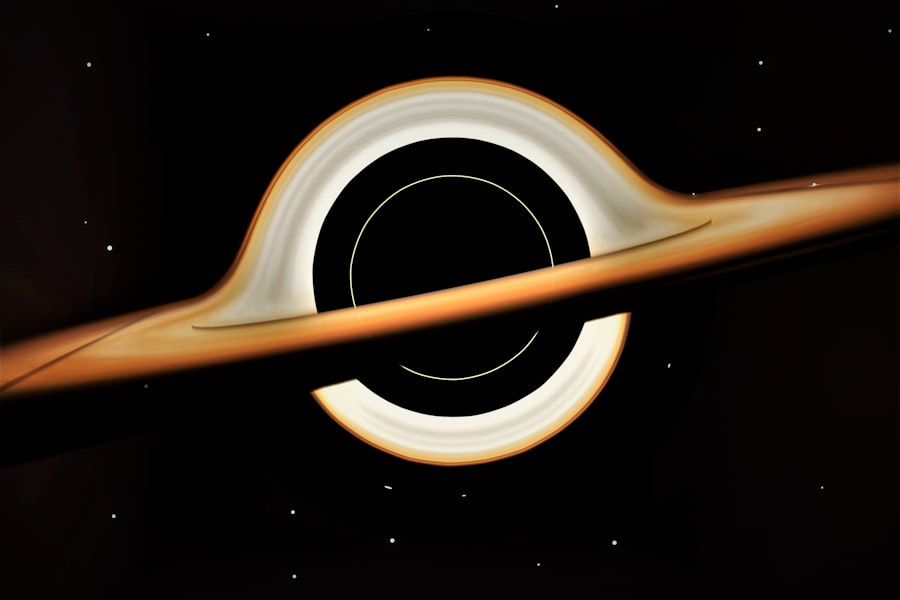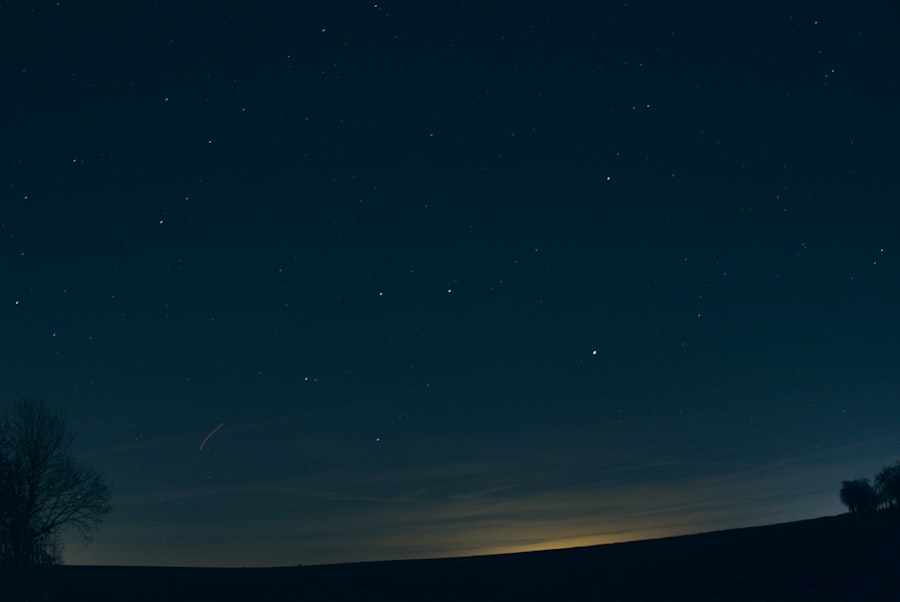Astronomy Picture of the Day (APOD) is a unique and engaging platform that serves as a gateway to the wonders of the universe. Launched in 1995 by Robert Nemiroff and Jerry Bonnell, APOD has become a staple for astronomy enthusiasts, educators, and the general public alike. Each day, the site features a stunning image or video related to astronomy, accompanied by a detailed explanation that provides context and insight into the celestial phenomena depicted.
This initiative not only showcases the beauty of the cosmos but also fosters a deeper understanding of astronomical concepts and discoveries. The significance of APOD extends beyond mere visual appeal; it acts as an educational tool that democratizes access to astronomical knowledge. By presenting complex scientific ideas in an accessible format, APOD encourages curiosity and exploration among its audience.
The platform has garnered a global following, with millions of visitors each month, reflecting a widespread interest in the mysteries of space. As technology advances and our understanding of the universe deepens, APOD continues to adapt, ensuring that it remains relevant and informative in an ever-evolving field.
Key Takeaways
- APOD Astronomy is a popular website that provides daily images and explanations of astronomical phenomena, aiming to educate and inspire the public about the universe.
- APOD was created in 1995 by two professional astronomers, Robert Nemiroff and Jerry Bonnell, and has since evolved into a widely recognized and trusted source of astronomical information.
- APOD selects and explains a different astronomical image or video each day, covering a wide range of topics such as planets, stars, galaxies, and cosmic events.
- APOD has contributed to the advancement of astronomy and space exploration by showcasing groundbreaking discoveries and promoting public interest and support for space missions.
- APOD has had a significant impact on public understanding of the universe by making complex astronomical concepts accessible and engaging to people of all ages and backgrounds.
The History and Evolution of APOD
The inception of APOD can be traced back to the early days of the internet when online resources for astronomy were limited. Robert Nemiroff and Jerry Bonnell, both affiliated with NASA and academia, recognized the potential of the internet as a medium for disseminating astronomical knowledge. They launched APOD as a simple email service that delivered a daily image along with a brief explanation.
This innovative approach quickly gained traction, leading to the establishment of a dedicated website that allowed for broader access. Over the years, APOD has undergone significant transformations in response to technological advancements and user feedback. Initially, images were primarily sourced from professional observatories and space missions.
However, as digital photography became more accessible, amateur astronomers began contributing their own images, enriching the diversity of content featured on the site. The evolution of APOD also reflects changes in the field of astronomy itself; as new discoveries are made and new technologies are developed, the platform adapts its content to highlight these advancements. Today, APOD not only showcases breathtaking images but also incorporates multimedia elements such as videos and interactive features, enhancing the user experience.
How APOD Astronomy Works

At its core, APOD operates on a straightforward yet effective model: each day, a new image or video is selected and presented alongside an informative explanation. The selection process involves a team of contributors who curate content based on scientific relevance, visual appeal, and educational value. This ensures that each entry is not only captivating but also grounded in accurate scientific principles.
The explanations accompanying the images are crafted to be informative yet accessible, catering to a wide range of audiences from casual viewers to seasoned astronomers. The technical infrastructure behind APOD is equally impressive. The website is designed to handle high traffic volumes while providing a seamless user experience.
Images are often hosted on external servers to optimize loading times and ensure high-quality displays. Additionally, APOD maintains an extensive archive of past entries, allowing users to explore a vast repository of astronomical knowledge. This archive serves as a valuable resource for educators and students alike, providing a wealth of material for teaching and learning about various astronomical phenomena.
APOD’s Contribution to Astronomy and Space Exploration
| Contribution | Description |
|---|---|
| Public Outreach | Bringing astronomy and space exploration to the general public through daily images and explanations. |
| Inspiration | Providing a daily dose of awe-inspiring images to inspire the next generation of astronomers and space explorers. |
| Educational Resource | Used as a teaching tool in classrooms to explain astronomical concepts and phenomena. |
| Scientific Research | Providing valuable data and images for scientific research and analysis. |
APOD has made significant contributions to the field of astronomy by promoting awareness and appreciation for celestial events and discoveries. By featuring images from both professional observatories and amateur astronomers, APOD highlights the collaborative nature of modern astronomy. This inclusivity fosters a sense of community among astronomers at all levels, encouraging knowledge sharing and collaboration across different sectors of the field.
Moreover, APOD plays a crucial role in public outreach for space exploration initiatives. By showcasing images from missions such as Hubble Space Telescope observations or Mars rover explorations, APOD helps bridge the gap between scientific research and public interest. The platform serves as a conduit for communicating complex scientific ideas in an engaging manner, making it easier for the public to grasp the significance of ongoing research and exploration efforts.
This connection between science and society is vital for garnering support for future missions and funding for astronomical research.
APOD’s Impact on Public Understanding of the Universe
The impact of APOD on public understanding of astronomy cannot be overstated. By providing daily doses of stunning imagery coupled with informative explanations, APOD cultivates a sense of wonder about the universe. This daily engagement encourages individuals to explore further, whether through additional reading or by pursuing their own interests in astronomy.
The platform demystifies complex concepts such as black holes, supernovae, and cosmic evolution, making them accessible to those without formal scientific training. Furthermore, APOD serves as an educational resource for teachers looking to incorporate astronomy into their curricula. The images and explanations can be used as visual aids in classrooms, sparking discussions about space science and inspiring students to delve deeper into related subjects.
By fostering curiosity and encouraging inquiry-based learning, APOD contributes to a more scientifically literate society that values exploration and discovery.
Notable Discoveries and Findings through APOD

Throughout its history, APOD has highlighted numerous significant discoveries in astronomy that have shaped our understanding of the universe. For instance, when the Hubble Space Telescope captured images of distant galaxies or nebulae, these stunning visuals were often featured on APOD, accompanied by explanations detailing their importance in cosmology. Such entries not only showcased Hubble’s capabilities but also provided insights into phenomena like galaxy formation and evolution.
Another notable example is the coverage of gravitational waves detected by LIGO (Laser Interferometer Gravitational-Wave Observatory). When these groundbreaking findings were announced, APOD played a pivotal role in disseminating information about this revolutionary discovery. By featuring images related to gravitational wave events and explaining their implications for our understanding of spacetime and black holes, APOD helped bring this complex topic into public discourse.
These instances illustrate how APOD serves as a platform for sharing pivotal moments in astronomical research with a broad audience.
Future Developments and Innovations in APOD Astronomy
As technology continues to advance at an unprecedented pace, the future of APOD looks promising with potential innovations on the horizon. One area ripe for development is the integration of augmented reality (AR) and virtual reality (VR) technologies into the platform. Such advancements could allow users to experience celestial phenomena in immersive ways, enhancing their understanding of spatial relationships within the universe.
Imagine being able to explore a nebula or navigate through a galaxy using VR headsets—this could revolutionize how we engage with astronomical content. Additionally, as machine learning algorithms become more sophisticated, they could be employed to analyze vast datasets from telescopes and space missions more efficiently. This could lead to quicker identification of noteworthy images or phenomena worthy of featuring on APOD.
Furthermore, incorporating user-generated content through interactive features could foster community engagement even further, allowing amateur astronomers to share their findings alongside professional work.
How APOD Astronomy Inspires and Educates the Next Generation of Astronomers
APOD serves as an invaluable source of inspiration for aspiring astronomers by showcasing the beauty and complexity of the universe in an accessible format. For many young individuals interested in science, encountering breathtaking images accompanied by engaging narratives can ignite a passion for astronomy that lasts a lifetime. The platform encourages exploration beyond its daily offerings; many users find themselves delving into related topics or pursuing formal education in astrophysics or planetary science.
Moreover, APOD’s emphasis on collaboration between professional and amateur astronomers highlights that anyone can contribute to our understanding of the cosmos. This inclusivity fosters an environment where budding astronomers feel empowered to share their work and engage with established scientists. By providing a platform that celebrates diverse contributions to astronomy, APOD not only educates but also inspires future generations to continue exploring the mysteries of space with curiosity and enthusiasm.


